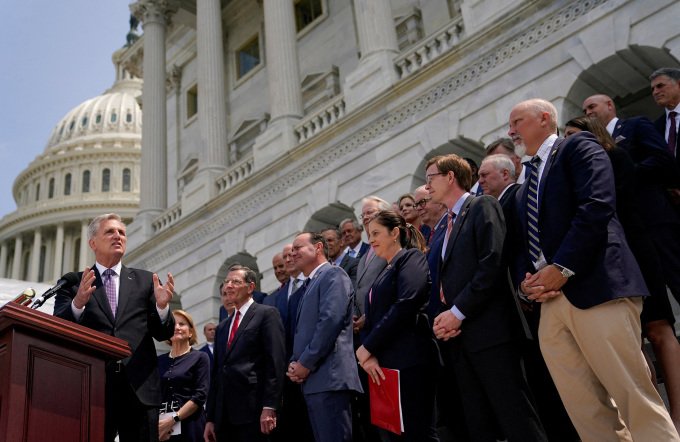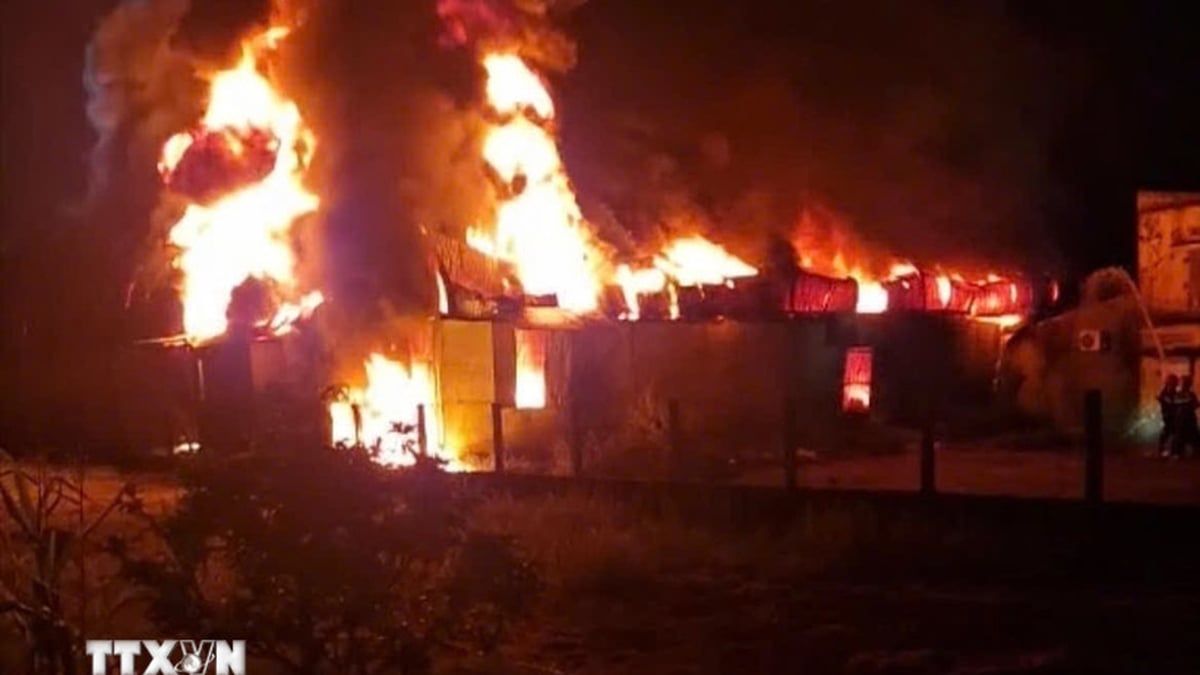It would not be a "nightmare" if the US government defaulted for a few days, but in a scenario of a few months, the economic and reputational consequences would be great.
The US Constitution gives Congress the power to legislate. In the coming days, that body could turn the once unthinkable into a painful reality. If it fails to raise the debt ceiling in time, the US could default on its government debt for the first time in modern history. Plunging stock markets, rising unemployment and global economic panic are all within reach.
The path to default is clear. By around June 1, if the current debt ceiling of $31.4 trillion is not raised, the government will run out of cash to cover a host of expenses, from military and federal employee salaries to bond interest payments.
The US has faced such deadlines in the past, leading observers to believe that it will once again raise the debt ceiling at the last minute. But politicians are more fractious now than they were during previous deadlocks, according to the Economist .

House Speaker Kevin McCarthy speaks to reporters as he stands with Republicans outside the U.S. Capitol in Washington on May 17. Photo: Reuters
House Speaker Kevin McCarthy is pushing for deep spending cuts, something he has to do to please Republicans. Meanwhile, President Joe Biden could lose the support of Democrats if he caves too much to Republican demands.
The Treasury Department, along with the Federal Reserve, has a contingency plan in place if Congress doesn't raise the debt limit. Called "payment preemption," it would prevent default by prioritizing revenue to pay interest on bonds that come due and cutting other spending.
But putting bondholders ahead of public sector salaries or pensions may not be sustainable. Nor is it good to have to race every day to meet the interest payments on bonds that come due. There is no guarantee that investors will trust such a dysfunctional government.
According to the Economist , a US debt default could fall into one of two scenarios: a short-term crisis or a long-term crisis. While the consequences of both would be disastrous, the long-term scenario would be much worse.
The United States is the world’s largest sovereign debt market, with $25 trillion in bonds held by the public. It accounts for about a third of the world’s total. U.S. Treasury bonds are considered the ultimate risk-free asset, providing guaranteed returns to large and small investors and governments of many countries, and are also the basis for pricing other financial instruments.
US Treasuries are the bedrock of everyday cash flows. Short-term repo transactions in the US are about $4 trillion a day and are the lifeblood of global financial markets. They are largely run using US Treasuries as collateral. All of this would be unsettled if the US defaulted.
In the first scenario, a default would be a short-term disruption. One Fed official described it as a liquidity crisis. Suppose the U.S. government defaults on bills and bond interest payments that come due after the “X-date.” However, if Congress acts soon to raise the debt ceiling, the situation remains stable for later maturing debts.
In fact, investors are also pricing in higher risk with bills maturing closer to maturity. U.S. Treasury bills due in June are now yielding around 5.5%, while those due in August are yielding closer to 5%.
In this scenario, the Fed would treat defaulted securities—such as Treasury bills that have missed interest payments—just like regular securities, accepting them as collateral for central bank loans and even buying them. It could also trade them to investors, taking in the “bad debt” and giving them back the “good debt,” on the assumption that the government would still be able to repay—albeit late—the defaulted securities.
While Fed Chairman Jerome Powell described such steps as “abhorrent” in 2013, he has also said he would accept them under certain circumstances. The Fed is wary of both putting itself at the center of a political dispute and taking actions that would make fiscal and monetary policy less clear. But to prevent financial chaos, it would almost certainly have to consider such options if a default were to occur.
A default lasting just a few days would be a black mark on America's reputation and could trigger a recession. Moody's Analytics estimates that in the immediate aftermath of a default, the US economy would shrink by nearly 1% and unemployment would rise from 3.4% to 5%, putting about 1.5 million people out of work. But with skillful management, it wouldn't be a nightmare, according to the Economist .
The second scenario , a prolonged default caused by Congress's delay or failure to pass a new debt ceiling, would be more dangerous. Mark Zandi, chief economist at Moody's Analytics, calls it a "TARP moment."
That was in the fall of 2008 when the US Congress initially failed to pass the Troubled Asset Relief Program (TARP ) to bail out banks, causing global markets to collapse. This time, he said, if Congress does not continue to raise the debt ceiling even after a default, it could have a similar effect.
The White House Council of Economic Advisers estimates that the stock market would fall 45% in the first few months of a default. Moody's Analytics says it would fall about 20% and the unemployment rate would likely rise by 5 percentage points - equivalent to about 8 million Americans losing their jobs. The government - constrained by the debt ceiling - would not be able to respond to the recession with fiscal stimulus, making it worse.
A series of downgrades would add to the problem. In 2011, during the previous debt ceiling standoff, S&P downgraded the US to one notch below AAA. So after a default, the rating agencies would be under intense pressure to downgrade, leading to a chain reaction.
Government-backed institutions like mortgage lender Fannie Mae would also be downgraded. The result would be a spike in mortgage rates, which would hit industries like real estate. Corporate bond yields would spike as investors scrambled for cash. Banks would pull back on their loans. Panic would spread.
There will also be unpredictable ripple effects. Typically, the currencies of defaulting countries will be hit hard. The US will have lost the trust the world has long placed in it. The need for alternatives to the dollar and the US financial system will become more urgent. Trust, once destroyed, cannot be easily restored.
Phien An ( according to The Economist )
Source link



































































































Comment (0)